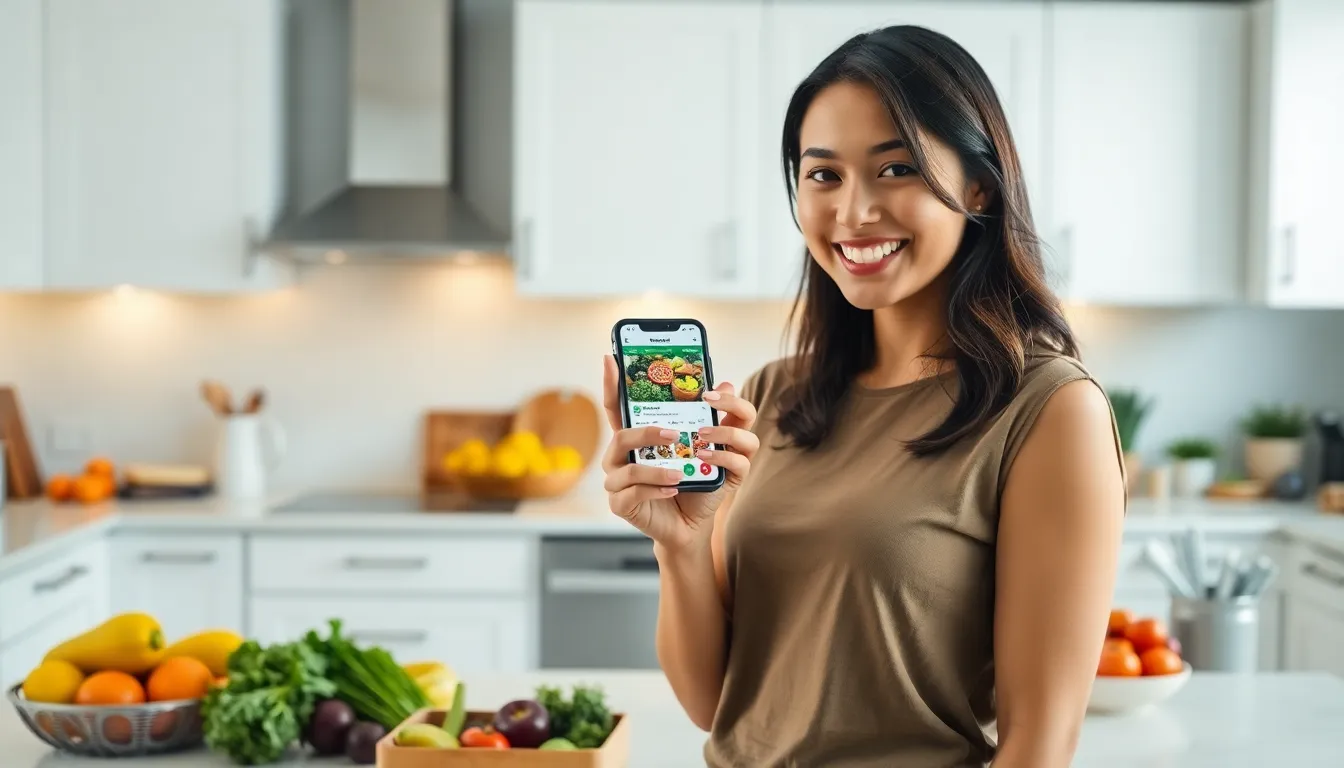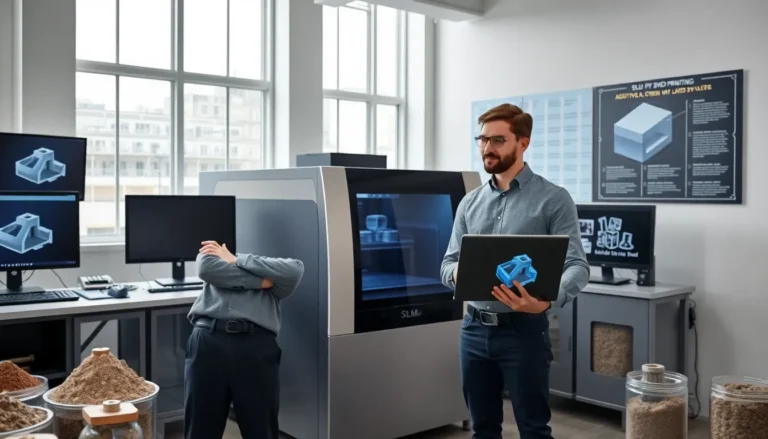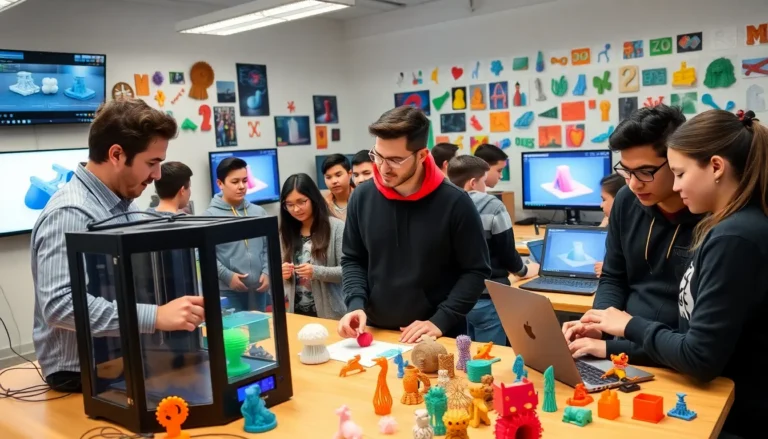Table of Contents
ToggleIn today’s fast-paced world, grocery apps have transformed the way people shop for food. With just a few taps on a smartphone, shoppers can browse aisles, compare prices, and even schedule deliveries right to their doorsteps. This convenience not only saves time but also makes meal planning and budgeting easier than ever.
As technology continues to evolve, grocery apps are becoming essential tools for busy individuals and families. They offer a variety of features, from personalized shopping lists to exclusive discounts, making grocery shopping more efficient and enjoyable. With the rise of online shopping, understanding the benefits of these apps can help anyone make smarter choices in their grocery routine.
Overview of Grocery Apps
Grocery apps streamline the shopping process by providing users with essential tools for efficient food procurement. Users can browse thousands of products, filter search results based on preferences, and receive real-time updates on promotions. Grocery apps often integrate price comparison features, allowing consumers to find the best deals across various retailers.
Grocery apps offer functionalities such as personalized shopping lists, enabling users to save frequently purchased items. Users can also access nutritional information and ingredient details directly from the app. These features assist in making informed decisions based on dietary needs and preferences.
Many grocery apps include scheduling options for home deliveries or curbside pick-ups. Users save time by planning their shopping around their schedules, reducing the stress associated with shopping. Exclusive discounts and loyalty rewards enhance the appeal of these apps, making grocery shopping not only convenient but also cost-effective.
Overall, the increasing reliance on grocery apps reflects a shift towards digital solutions in everyday tasks. Understanding these applications fosters smarter grocery choices while promoting a more organized and efficient shopping experience.
Key Features of Grocery Apps

Grocery apps encompass various features that enhance the shopping experience, making it more efficient and user-friendly. Key functionalities include intuitive design, price comparison tools, and flexible delivery options.
User Interface Design
User interface design significantly influences grocery app usability. Clean layouts allow for easy navigation, while intuitive elements help users quickly find products. Visual hierarchies break information into manageable sections, making it simple to browse categories and access features. Responsive design ensures functionality across devices, improving the overall experience for users on smartphones and tablets.
Price Comparison Tools
Price comparison tools empower users to identify the best deals available. These tools seamlessly aggregate prices from multiple retailers, displaying them in real time. Users can filter results based on criteria such as product type or price range, enabling them to make informed purchasing decisions. Alerts for price drops further enhance savings opportunities, encouraging users to take advantage of discounts.
Delivery Options
Flexible delivery options considerably improve convenience for users. Grocery apps offer various choices, including home delivery and curbside pick-up. Scheduled deliveries let users select specific times for product arrival, accommodating busy lifestyles. Some apps also support same-day delivery services, dramatically reducing wait times and ensuring fresh products reach consumers quickly.
Popular Grocery Apps
Grocery apps offer various features and benefits that enhance the shopping experience. Here are three popular grocery apps, highlighting their key functionalities.
App 1: Instacart – Features and Benefits
Instacart allows users to shop from local grocery stores. Users can browse thousands of products, create personalized shopping lists, and schedule deliveries or pick-up. Instacart features real-time tracking of orders, enabling users to monitor delivery status. Additionally, users benefit from special promotions and discounts from various retailers.
App 2: Walmart Grocery – Features and Benefits
Walmart Grocery provides a straightforward shopping experience. Users can select from a wide range of products available at Walmart and use the built-in price comparison feature for quick savings. The app offers an easy-to-navigate interface, making it simple to search for items. Users appreciate the flexible scheduling options for curbside pick-up and same-day home delivery, catering to diverse needs.
App 3: Shipt – Features and Benefits
Shipt connects users with personal shoppers who handle grocery shopping and delivery. Users can choose from popular grocery chains and customize their orders based on preferences. Shipt provides an intuitive interface with features like in-app chat for direct communication with shoppers. The subscription model offers free delivery on orders above a certain amount, making it a cost-effective option for frequent users.
Advantages of Using Grocery Apps
Grocery apps offer significant advantages for users, enhancing their shopping experience through convenience and efficiency. From saving time to improving budgeting, these apps transform food shopping in meaningful ways.
Time-Saving Benefits
Time-saving benefits stand out among the advantages of grocery apps. Users can quickly create shopping lists and access stores online, eliminating the need to navigate crowded aisles. Users can also schedule deliveries, fitting grocery shopping seamlessly into busy routines. Research shows that grocery apps can reduce shopping time by up to 30%, allowing users to focus on other essential tasks.
Enhanced Shopping Experience
Enhanced shopping experiences are crucial for user satisfaction. Grocery apps provide features like personalized recommendations based on past purchases, making it easier for users to find favorite products. The intuitive design allows for swift searches and easy navigation, improving the overall user experience. Real-time promotions and discounts often alert users to deals they might overlook otherwise, maximizing the shopping value.
Cost-Effectiveness
Cost-effectiveness plays a key role in the appeal of grocery apps. Users can compare prices across multiple stores effortlessly, ensuring they find the best deals on their desired items. Many grocery apps offer exclusive promotions and discount codes, enabling users to save additional money. Data indicates that users can save an average of 10-20% on grocery bills by utilizing these apps for informed shopping decisions and strategic purchases.
Challenges Facing Grocery Apps
Grocery apps encounter several challenges that impact their effectiveness and user adoption. These challenges include technical issues and intense market competition.
Technical Issues
Grocery apps often face technical issues that hinder user experience. Performance glitches can lead to slow loading times, causing frustration during shopping. Security vulnerabilities pose risks for personal and payment information, undermining user trust in the app. Additionally, frequent app updates may disrupt user experience if they introduce bugs or require significant changes to navigation. Compatibility issues with different devices can also limit user accessibility, affecting overall engagement with the app.
Market Competition
Market competition presents a significant challenge for grocery apps. Numerous options exist, with major players like Amazon Fresh and Target’s grocery service competing directly against other popular apps. This saturation makes differentiation difficult, requiring grocery apps to constantly innovate features and enhance user experience. Additionally, price wars among competitors can erode profit margins, compelling apps to find new revenue streams or promotional strategies. Consumer loyalty shifts rapidly, resulting in a need for grocery apps to maintain user retention through rewards programs or unique offerings to remain relevant in a crowded market.
Grocery apps are transforming the way people shop for food by providing convenience and efficiency. As technology continues to evolve these applications will likely become even more integrated into daily life. With features designed to save time and money users can enjoy a streamlined shopping experience that meets their needs.
The benefits of grocery apps extend beyond mere convenience. They empower consumers to make informed choices while allowing for personalized shopping experiences. As competition in the market intensifies developers will need to innovate continually to attract and retain users.
Ultimately grocery apps represent a significant shift in consumer behavior highlighting the importance of digital solutions in modern shopping. Embracing these tools can lead to smarter grocery choices and a more organized approach to meal planning and budgeting.







